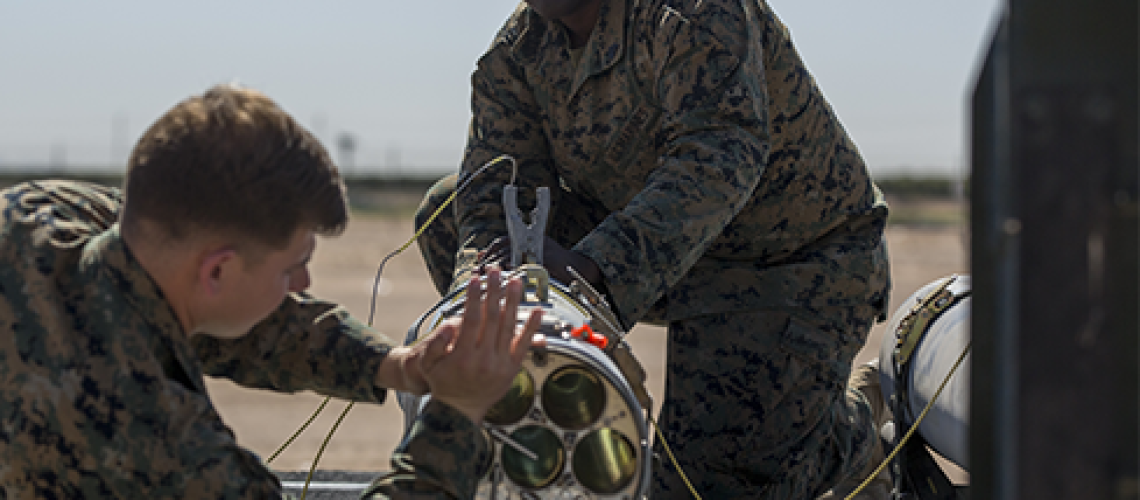The war in Ukraine has shown that one does need mass to counter mass, a reality that has been virtually absent from Western armed forces’ thinking on the nature of warfare since the end of the Cold War. In an world where a growing number of actors can deploy drones and missiles and access inexpensive satellites and cutting-edge commercial technologies, many countries are demonstrating ingenuity in countering threats that are “not worth the cost” of sacrificing expensive missiles or ammunition or exposing valuable military assets to disproportionate risks, by combining mass and technological sophistication in a disruptive way. This concept could be described as “smart mass,” by analogy to the concept of “precision mass” developed by some military analysts in the United States.
The tactical adaptation of French forces in Mali is an excellent example of operational innovation and optimization to deal with asymmetric threats using economic means. Such an approach of favoring the use of conventional weapons (cannons, machine guns) over expensive missiles is consistent with the more recent example of the US F-16s using APKWS II rockets against Houthi drones. In both cases, this is an adaptive and economical response to threats that do not justify the use of expensive ammunition at the risk of rapid attrition.
Providing a response proportionate to the value of the targets to be neutralized: the example of the French Army Aviation in Sahel
During the Barkhane Operation in Sahel in the 2010’s, helicopters proved particularly effective against targets such as pickup trucks, thanks to their ability to loiter and engage such targets with more suitable low-cost weapons such as rockets, 30 mm cannons, and 20 mm cannons.
As the ALAT opted to use onboard cannons rather than expensive missiles to neutralize armed terrorist groups, Gazelle, Puma, and Cougar helicopters, as well as Tiger helicopters, were able to support operations in the Sahel and neutralize these groups.
One of the main tactics involved the use of the Puma “Pirate” equipped with a 20 mm gun in a gun port. This configuration has regularly provided valuable support to units in contact with armed terrorist groups in Mali. This was particularly the case during fighting in 2013.
An innovative weapon configuration in anti-drone warfare in the Red Sea: the example of the US Air Force against the Houthis
To save expensive anti-missile weapons, the US Air Force adapted its F-16s with laser-guided rocket pods, a combination that has led to economically viable anti-drone warfare (1).
F-16s operating in the Middle East were able to use their LITENING targeting pods to identify and neutralize targets with laser-guided weapons traditionally used in air-to-ground operations.
This new weapon configuration features F-16s carrying two seven-shot 70mm rocket pods on a single pylon under the right wing using a triple ejection rack (TER). These rockets are equipped with the Advanced Precision Kill Weapon System II (APKWS II), which converts standard unguided 70mm rockets into precision munitions by adding laser guidance kits.
The complete configuration includes:
- 2 seven-shot 70mm rocket pods (14 rockets in total);
- 2 AIM-9X Sidewinder missiles;
- 2 AIM-120 AMRAAM missiles;
- 1 LITENING targeting pod;
- 1 HARM Targeting System (HTS) pod;
- 2 external fuel tanks.
What makes this configuration particularly noteworthy is that it significantly increases the aircraft’s strike capability compared to traditional air-to-air configurations. While a typical air defense configuration might include only 6 missiles in total, this adapted configuration offers up to 14 engagement opportunities with laser-guided rockets alone, plus additional conventional air-to-air missiles.
The economic benefits of this approach are considerable. Each APKWS II guidance kit costs approximately $15,000 to $20,000, with complete rockets totaling approximately $25,000 including warheads and motors. In comparison, traditional air-to-air missiles cost hundreds of thousands of dollars each: an AIM-120 AMRAAM missile costs approximately $1 million and an AIM-9X Sidewinder approximately $400,000.
This cost difference makes the APKWS II solution particularly attractive for engaging lower-value targets such as unmanned aerial vehicles, allowing forces to reserve their inventory of expensive missiles for higher-threat scenarios.
The targeting methodology uses the F-16’s LITENING pod to “light up” or designate targets. The pod’s sensor can be connected to the aircraft’s radar, enabling accurate tracking and engagement of relatively slow-moving targets such as drones and cruise missiles. The targeting system can also support wingman tactics, in which one aircraft designates targets while another performs the attack run.
These adaptations represent more than just a tactical solution to an immediate threat. They demonstrate how creativity and operational flexibility can leverage existing technologies in new ways to meet emerging challenges. By reconfiguring proven systems rather than developing entirely new platforms, armed forces achieve both cost savings and rapid deployment of capabilities.
- (1) See in particular the US website The War Zone’s article >>> https://www.twz.com/air/air-launched-laser-guided-rockets-shown-shooting-down-houthi-drones-for-first-time
By Murielle Delaporte
Photo : US Marines loading a rocket configured with APKWS II © Lance Cpl. Ashley McLaughlin, USMC, Arizona, 2025
